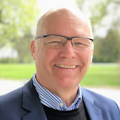New technology is making a difference in the supply chain. The transportation sector, where I have spent my career, has been especially resistant to change, more so than other parts of the supply chain. Primary barriers were cost (note: average profit of about 6% equals no budget for experimentation) and user acceptance.
But, as costs recede, apps proliferate, and many have proven quite useful. So now there is an app, many apps, for every imaginable area of this thing called the supply chain.
See also: OnCommand Connection gains app for its telematics
So, we’re good right? I can find software and hardware to automate any process and get all the data I want, so life is good! Well yes, you can … but having decent tech at decent prices, and with proven results, is only the beginning.
Innovators, from their garages and dorm rooms, have created the most life-changing devices and software of our time: Apple, Dell, Uber, etc. My implication is not that any of these were an easy feat, but they had to also conquer the next two hard parts.
Integrations are hard
Why should I care about integration? Let’s start at the beginning. When a customer orders an item I need to advise them whether that item is in stock, when to expect it on their porch, and then keep them updated throughout the process. To do these things, my warehouse software must talk to my brokers’ software, must talk to the carriers’ software, must talk to the fleets’ TMS, must talk to the driver facing apps, must talk to freight visibility services, ad infinitum.
Now the app providers must also want their apps to talk to each other and undertake the effort to make that work. It’s not easy, quick, or cheap. However, demand is finally driving this one forward. Now on to the third puzzle piece.
User adoption is hardest
Let’s say we have the right apps, delivering accurate data to all endpoints and back with acceptable speed and accuracy. Let’s even say we have one portal in the office and one app in the hands of the warehouse worker, dispatcher, and driver. Still, the following questions arise: Do my end-users see the value? Is it intuitive and easy to learn? Does it deliver the data back to the portals in usable, actionable ways as opposed to dumping the data and leaving me to figure out how to use it?
Where to start?
Where do I even start to find the right solutions that talk to all the other right solutions accurately, speedily, and deliver data that helps me make business decisions?
- Define the business problems that you need to solve.
- Look at available solutions, talk to your trusted industry counterparts about what they are using, what is working, and what is not.
- Collaborate with (or find) a trusted tech provider(s) to put the puzzle pieces together.
- Balance what they tell you with what you read and hear elsewhere.
- Narrow the field for each solution area or better yet, find a unified solution stack with high adoption rates.
Identify providers that are both experienced in supply chain and are working with modern tools—software languages, hardware platforms, and working with other industry stalwarts.
With the influx of investment capital into supply chain tech, there are many investment-smart, industry-newbie providers out there. Financial stability is important but look at their people’s experience and longevity.
As you review each, ask the hard questions: Have you ever integrated with X or Y? What is your process for this? May I speak with current customers?
Create the best proof-of-concept pilot, with all solutions integrated if possible.
This is time-consuming but will both identify rough spots before you go live and reveal your prospective tech partners’ strengths and weaknesses.
Verlen Larsen is a solution architect for Transflo, a mobile, telematics, and business process automation provider to the transportation industry. Transflo’s mobile and cloud-based technologies deliver real-time communications to fleets, brokers, shippers, and commercial vehicle drivers. Larsen is a frequent speaker and writer on technology, training, and transportation.
About the Author

Verlen Larsen
Transflo Solution Architect
Verlen Larsen is a Solution Architect for Transflo, a mobile, telematics, and business process automation provider to the transportation industry. Transflo’s mobile and cloud-based technologies deliver real-time communications to fleets, brokers, shippers, and commercial vehicle drivers. Larsen is a frequent speaker and writer on technology, training, and transportation. He is a self-professed trucking “lifer” with a background that includes driving, working in dispatch, safety, corporate, and sales management.
